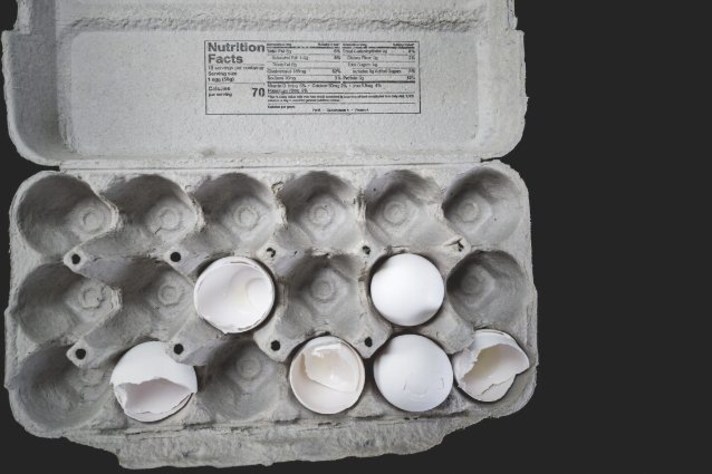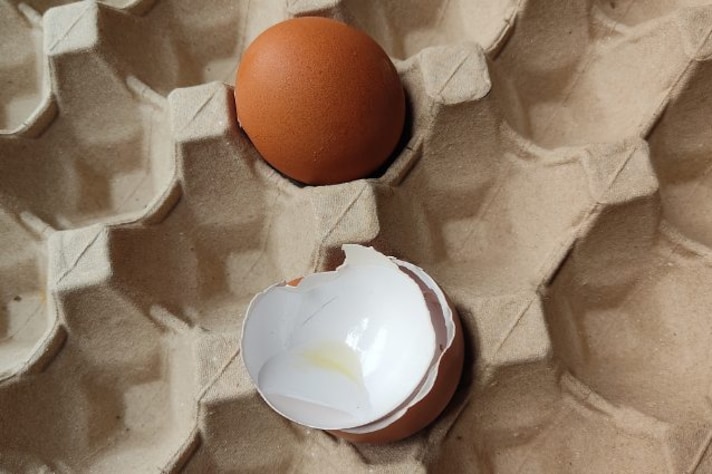
There’s no shame in admitting it—every single one of us has done it at least once. You’re whipping up a recipe, cracking eggs with one hand and scrolling your phone with the other. Instead of trekking to the trash can or compost bin, you toss the empty eggshells back into the carton, figuring you’ll deal with them later. It feels logical, hassle-free, and harmless. After all, it’s not like you’re planning to keep those shells around. But here’s the thing: putting eggshells back in their carton can cause more harm than you might think.
The Salmonella Situation Is A Risk You Don’t Need
Eggshells, even after the egg itself is emptied out, can harbor bacteria like salmonella. These microscopic hitchhikers love the porous surface of eggshells, where they can easily cling on. By tossing an empty eggshell back into the carton, you’re inviting bacteria to mingle with the remaining intact eggs. And once they’re inside that shared space, cross-contamination becomes a real risk. The carton is meant to protect the eggs, not serve as a germ-infested waiting room. Even if you plan to refrigerate it, those bacteria can survive and spread, making your next breakfast scramble a potential hazard.

It’s a Smelly, Sticky Mess Waiting to Happen
Let’s face it: cracked eggshells are messy. They still have a bit of albumen (that clear, sticky stuff) clinging to the inside, and that residue can quickly turn into a breeding ground for odor and bacteria. Put enough empty shells back in the carton, and you’re basically creating a mini compost heap in your fridge. Even if you don’t notice it right away, the smell has a way of creeping into other foods. Suddenly, your fridge smells like a faint but unmistakable whiff of rotten eggs, all because you took the easy way out.
Cartons Aren’t Built for Dirty Jobs
Egg cartons are designed for one purpose: to keep fresh, intact eggs safe. They’re typically made of cardboard or foam, neither of which is ideal for handling wet, sticky, or contaminated materials like empty eggshells. Cardboard absorbs moisture and odors, while foam retains bits of residue. Once you’ve dirtied the carton with used shells, you’ve compromised its integrity. If you were hoping to recycle that carton or use it for crafts, forget about it—contamination makes it unusable and unwelcome in most recycling programs.

How to Discard Eggshells the Right Way
So, what’s the alternative? If you’re cracking eggs at the counter and don’t feel like walking to the trash can every time, keep a small, dedicated bowl nearby for the empty shells. Once you’re done cooking, you can toss the bowl’s contents into the trash, compost bin, or even use them for gardening (crushed eggshells make excellent soil amendments). The key is to avoid letting the shells hang out in the carton, where they can wreak havoc on your kitchen hygiene and your fridge’s freshness. A little planning goes a long way in keeping your cooking space clean and safe.
;Resize,width=767;)
